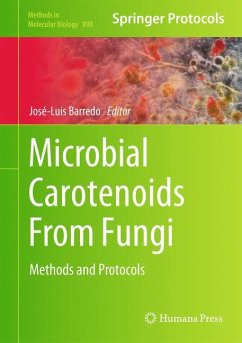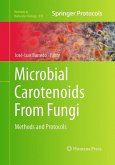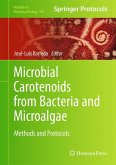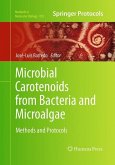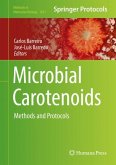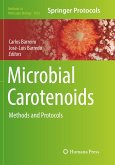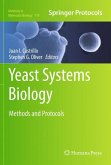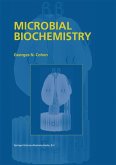Carotenoids are a family of yellow to orange-red terpenoid pigments synthesized by photosynthetic organisms and many bacteria and fungi. They have beneficial health effects protecting against oxidative damage, and may be responsible for the colours associated with plants and animals. In Microbial Carotenoids From Fungi: Methods and Protocols, expert researchers in the field detail many of the most up-to-date methods which are now commonly used to study carotenoids. These include methods for the manipulation and metabolic engineering of the Beta-carotene producing fungi Blakeslea trispora and Mucor circinelloides, lycopene production with the yeast Yarrowia lipolytica, peroxisome targeting of lycopene pathway enzymes in Pichia pastoris, and the manipulation of the heterobasidiomycetous yeast Xanthophyllomyces dendrorhous, which produces astaxanthin, a red xanthophyll with large importance in the aquaculture, pharmaceutical, and food industries. Additionally, the book includes a DNA assembler method for construction of zeaxanthin-producing strains of Saccharomyces cerevisiae, production of neurosporaxanthin by Neurospora and Fusarium, and production of torularhodin, torulene and b-carotene by Rhodotorula yeasts. Written in the highly successful Methods in Molecular Biology(TM) series format, chapters include introductions to their respective topics, lists of the necessary materials and reagents, step-by-step, readily reproducible laboratory protocols, and key tips on troubleshooting and avoiding known pitfalls.
Authoritative and practical, Microbial Carotenoids From Fungi: Methods and Protocols, provides practical experimental laboratory procedures for a wide range of carotenoids producing microorganisms.
Authoritative and practical, Microbial Carotenoids From Fungi: Methods and Protocols, provides practical experimental laboratory procedures for a wide range of carotenoids producing microorganisms.
From the book reviews:
"All the chapters are well organized and each chapter contains an abstract at the beginning and a note or conclusion at the last that can be very useful for the reader. ... This book is very important to scientists, researchers and teachers as well as students who are interested in microbial carotenoids and commercial production. This book therefore should be available in all schools, biotechnology laboratories, community and university libraries." (Kasun M. Thambugala and Paul G. Mungai, Fungal Diversity, December, 2014)
"All the chapters are well organized and each chapter contains an abstract at the beginning and a note or conclusion at the last that can be very useful for the reader. ... This book is very important to scientists, researchers and teachers as well as students who are interested in microbial carotenoids and commercial production. This book therefore should be available in all schools, biotechnology laboratories, community and university libraries." (Kasun M. Thambugala and Paul G. Mungai, Fungal Diversity, December, 2014)

